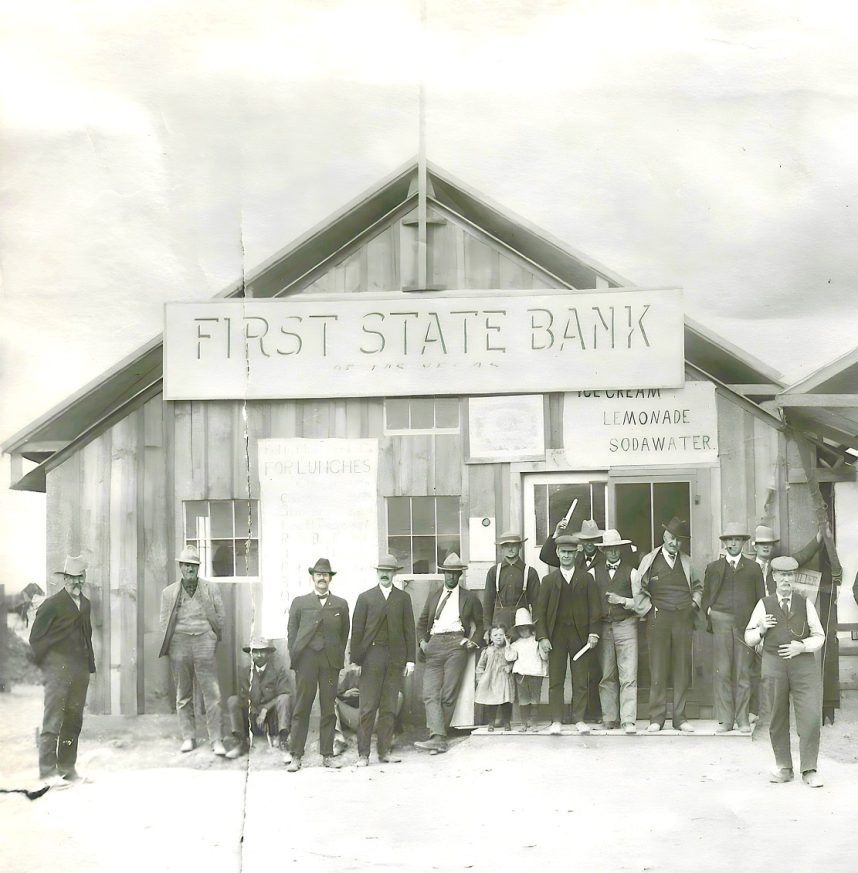
The Original Las Vegas That no one knows about was LOST VEGAS:
Las Vegas wasn’t even the first Las Vegas in Las Vegas. An actual, thriving community of 2,000–3,000, also called Las Vegas, was founded before the train that reportedly built Las Vegas even got there.
J.T. (John Thomas) McWilliams, born in Ontario, Canada, in 1863, was a freelance land and water surveyor recruited in 1902 by the San Pedro, Los Angeles, & Salt Lake Railroad. His assignment was to assess a nearly 2K-acre ranch owned by one of Las Vegas’ sole residents at the time, Helen J. Stewart. The railroad was considering purchasing the land to develop a village for its new railroad station.
Armed with that tidbit of insider information, McWilliams was determined to beat the crowd to town. In 1904, he bought 80 acres of Stewart’s ranch. The acreage sat immediately west of the railroad right-of-way.
Using his surveying abilities, he methodically planned out an organized grid with huge dirt lanes that eventually became today’s Bonanza Road, Washington Avenue, and A and H streets.
After McWilliams constructed it, they came: railroad workers and their families—white, black, Latino, and Native American. Most traveled the Mormon Road wagon route either from Los Angeles or Salt Lake City, the two major cities they were building the railroad to connect.
Because most were builders, they had little issue building their own houses, though some slept in tents while saving up for the materials. McWilliams constructed his own home there, too, at 222 Wilson St.
By the beginning of 1905, McWilliams’ Las Vegas had stores, a bank, and was even building Las Vegas’ first theater. (McWilliams persuaded vaudeville impresario Chauncy Pulsifer to begin building on the 800-seat Trocadero that May.) The early Las Vegas had all the modern conveniences—eexcept one.
Because McWilliams had never secured the water rights to his township’s land—Stewart sold them to Montana Sen. William A. Clark, proprietor of the railroad—the inhabitants of the first Las Vegas were forced to lug their water from a mishmash of wells dug across the community.
This was conceivable, since Las Vegas (Spanish for “the meadows”) teemed with underground springs before they were all sucked up by decades of development. But it was a nuisance.
So, when Clark began promoting the May 15–16, 1905, land auction that would build his own Las Vegas on the other side of the freshly built railroad tracks, one thing that especially jumped out to the citizens of O.G. Las Vegas was that his lots all featured running water.
“McWilliams got a jump on it, but he didn’t have the water rights, and that’s what destroyed him,” Emmett Gates, a Las Vegas documentary filmmaker, told Casino.org.
J.T. McWilliams poses, possibly in the 1930s, in the backyard of the home he built in his own township. (Image: UNLV Special Collections)
Over a period of a few weeks, McWilliams’ Las Vegas emptied out, while Clark’s became today’s downtown.
“People with businesses placed the buildings on skids and moved them across the tracks to the Clark side,” Gates recalled.
Once Clark’s Las Vegas became the official one, the original fell into almost instant decay. A fire in September 1905 devastated most of what was left of the town, including the half-built Trocadero.
McWilliams, who refused to relocate, asked that the devastated land be called “the original Las Vegas Townsite,” but no one listened. They were already degrading it as “Ragtown.” Later, its name became Old Town and then the west side.
In the fall of 1941, McWilliams died of a heart attack at 222 Wilson St., which was demolished when his widow died in the late ’60s.
Today, the neighborhood is recognized as the Historic West Side, although not because of any respect paid to McWilliams. Its historicity originates from the black community that built the neighborhood up after becoming herded and stuck there, beginning in 1931, due to the openly racist practices of Las Vegas Mayor Ernie Cragin.
And thus, William Clark got all the glory. He deserves all the credit for establishing Las Vegas. He even had the county in which the city was located named after him.
All McWilliams got named after was an elementary school erected in 1961 on a portion of his previous estate.
“There’s absolutely nothing that remains of the original site,” said Gates, “and historians are the only ones who use the name ‘McWilliams Town Site,’ because they’re the only ones who remember who McWilliams was.”
Gates’ latest documentary about the black experience in Las Vegas, “Across the Tracks,” screens Wednesday, March 6, at the Galaxy Theatres at the Boulevard Mall.


Leave a Reply